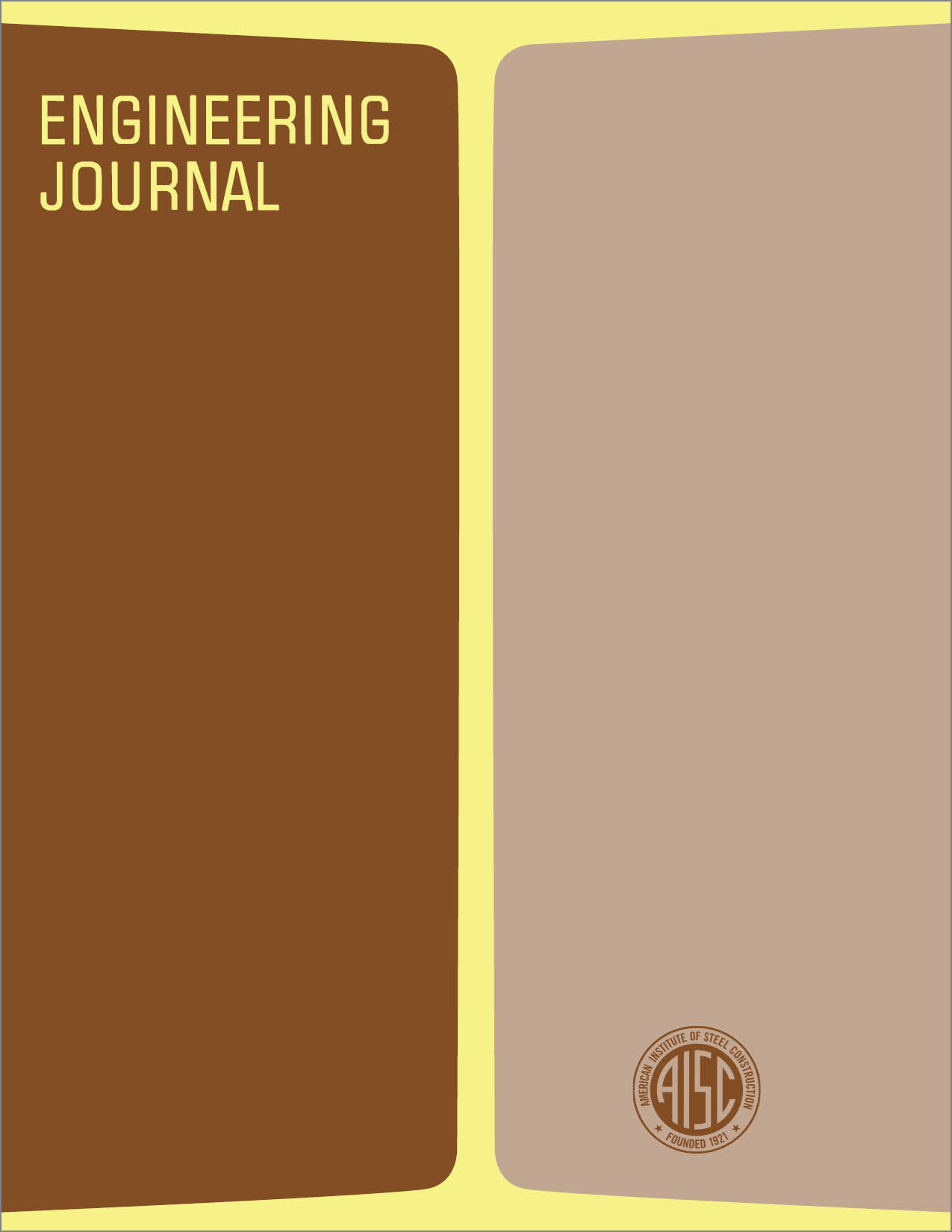Plastic Design of Biaxially Loaded Beam-Columns
DOI:
https://doi.org/10.62913/engj.v10i1.203Abstract
In the field of engineering design, it is normal to design steel wide-flange columns as if they were loaded by direct compression or by a thrust with some eccentricity about only one of the principal axes. Only limited design information is available concerning the case where there exists, simultaneously, some eccentricity with respect to each of the major axes. Where careful consideration is given to the true loading on a wide-flange column, it is frequently found that the longitudinal thrust on most columns does have some eccentricity in both principal directions. Figure 1 illustrates this general loading situation. The AISC Specification1 contains plastic design rules for axially loaded wide-flange columns with either no moment or with moment about only one principal axis. The design criteria for the ultimate load-carrying capacity of a biaxially loaded beam-column is obtained by an implied extension of Formulas (2.4-2) and (2.4-3). It has, therefore, been desirable for some time not only to predict the ultimate loadcarrying capacity of a member loaded in this manner, but to provide additional design criteria for the selection of such members. This paper presents a design technique for determination of the maximum plastic strength of biaxially loaded beamcolumns. The loading situation is caused by a compressive force eccentric to each of the two principal axes. The eccentricities are not restricted in any way. The member is an open section, composed of prismatic elements, of the wideflange class, in which no stress reversals occur. The material is assumed to be ideally elastic-perfectly plastic, but may contain residual stresses. The analytical procedure used to determine the ultimate load is based on an equilibrium technique in which the external forces acting on the cross section are equated to the internal resistances of that section as determined by the distribution of longitudinal stresses. The procedure is iterative and non-incremental. The principles of the procedure are presented in this paper as well as the results in the form of an interaction curve, design charts, and the equations of forces as used in the analytical procedure.

